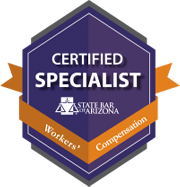Working Remotely: Are You Entitled to Workers’ Compensation Benefits?

OVERVIEW OF WORKING FROM HOME
Many people have worked from home over the last few years. For those office workers who could access their company’s documents in the company’s cloud service, this became a big bonus as work could be completed even when not in the office. If you had to “attend” a department meeting, you just check in by accessing the company’s video service account.

The pandemic changed many people’s lives when they could continue to work from home and collect a paycheck as well as all their benefits. Meanwhile, manual laborers were unable to work at all, due to lockdowns unless they were considered essential workers.
Another pleasant aspect of working from home during the pandemic was ordering groceries and meals by calling or ordering online, getting everything delivered to the home, and continuing to work without going to the store in the middle of the day. Doctor visits could still take place so long as both the doctor and the patient could use technology by visiting through a telemedicine setup. All of this is still happening today even as pandemic restrictions have ended, for the most part.
Statistics show that as of 2021, 26.7 percent of employees work at home (remotely). This percentage will grow over the next few years, especially as employers see that more employee work gets done while working remotely, than in the office setting where there is far more distraction. Employees (40 percent) feel they get more done while working remotely and are comfortable while doing so.
An interesting statistic is that 16 percent of American companies are now fully remote. It is not uncommon to find the owner or CEO living in California, while the Vice President of Operations resides in Texas. Or one executive officer lives in India while another lives in New York City.
The all-remote opportunity means that people living anywhere, globally, can grow a business and have nearly as much business clout as a Fortune 500 company. All their employees live across the globe, and they all get full benefits as well.
But what if there was an accident at home while you were working remotely? Would you still get workers’ compensation benefits? For the most part, yes.
Whether your claim is a valid one, has more to do with why you had the accident and how it would be connected to your work. If you have questions about whether your remote work accident can be claimed under workers’ compensation, call an Arizona workers’ compensation attorney for information on your case.
Certain remote working conditions would need to be in place, such as getting affirmation by phone or email, stating that you are approved to work from home, either for that day or on a regular basis. Let us look at several examples to see the differences between valid claims and those which were denied.
A CASE OF SLIPPING ON THE KITCHEN FLOOR WHILE PREPARING LUNCH
John B. works as a data analyst for a large cloud service and takes his one-hour lunch break around 12:30 p.m. While he is gathering his food and taking it from the refrigerator to the countertop across the kitchen, John slips on a small, unnoticed puddle of water left by his kids. Even though he sprains his ankle, he can still work as he sits down most of the time to work.
The problem is that he had to go to his doctor to get things checked out and was told he needed an ankle cast put on. He also needed prescription drugs to reduce swelling and pain.
The Verdict: John got workers’ compensation benefits to cover medical bills because he was working at home and taking his lunch break at home, which is also considered his office.
A CASE OF SLIPPING ON THE DRIVEWAY AFTER PICKING UP PRINTER PAPER
Sally R. has worked remotely for her current boss for several years. She was asked by her boss to send a document, printed out, and faxed to the boss’s office fax. As it was for an important meeting coming up in two hours, Sally got in her car and went to a local office supply store for the paper. Having purchased the paper, she returned home and pulled up in her driveway, which was covered with ice.
When she got out of the car and gathered up her ream of paper and purse, she slipped and fell directly on one of her kneecaps. After taking care of her boss’s request, she went over to a local emergency room to get her kneecap checked. It was slightly fractured, so she required medical help until she was healed. Sally found she could prop up her leg on a chair and continue working, even though it was painful.
The Verdict: Sally was approved for workers’ compensation benefits because she had to make a car journey to fulfill her boss’s request for documents by fax. She received workers’ compensation benefits to pay medical bills. Her boss had a fax machine but not a printer in his office.
THE CASE OF A NAP GONE WRONG
Steven S. almost always took a one-hour nap in the middle of the afternoon and then came back to work, refreshed, working until 6 p.m. One day, Steven went to bed in the afternoon as usual but tossed and turned in his sleep. He suddenly fell out of bed onto the floor and hurt his hip, which also affected his spinal cord. He could not sit up comfortably at his home office desk for over a week.
The Verdict: Steven’s claim was initially denied, as taking a nap during the day was not part of his official duties to his employer. However, his employer does have napping beds at the business where people can rest if they need it. Steven has made a Request for a Hearing to contest the decision.

CONTACT US IF YOU NEED HELP WITH YOUR CLAIM
Every case has an original set of circumstances surrounding any type of workplace accident and injury. Never be afraid to ask questions and to fight for your rights. Arizona Injury Law Group offers experienced and Certified workers’ compensation lawyers and legal services for injured workers. Call for your free consultation! 602-346-9009.
Get Help Today
Call Immediately For A Free, No Obligation Consultation And Let Us Help You Put Your Life Back On Track. Let Us Help You
Regain Normalcy And Stability Again. We Want To Help You Get The Benefits You Need And Deserve!


